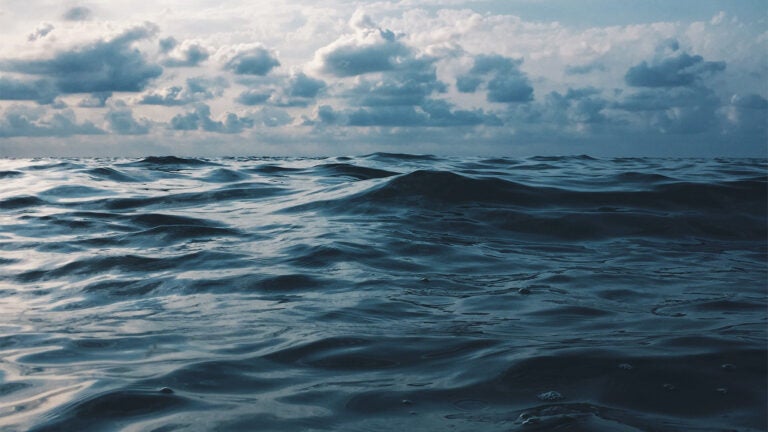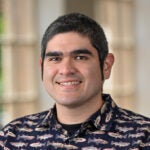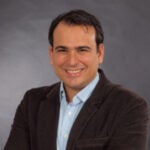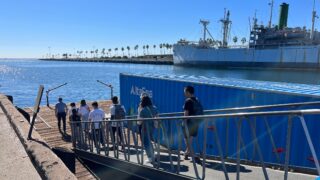
Source Alert
From lab to sea: Inside USC’s carbon capture research
USC scientists are on the cutting edge of carbon capture research, drawing inspiration from nature’s most effective carbon-capturing systems to combat climate change.
From innovative technologies that remove emissions directly from ships to tapping into the natural ability of coastal wetlands to store vast amounts of carbon, USC researchers are following nature’s lead to discover new ways to protect our planet for future generations.
Contact: Nina Raffio, raffio@usc.edu or (213) 442-8464; USC Media Relations, uscnews@usc.edu or (213) 740-2215
Ocean-inspired tech could speed up carbon capture from ships
Researchers at USC and Caltech, in collaboration with startup company Calcarea, have developed a device to capture carbon emissions directly from cargo ships and other diesel-powered vessels that support the global shipping industry.
“Our technology mimics the ocean’s natural carbon capture process but at an exponentially faster rate. What takes nature years, our reactors achieve in mere minutes,” said William Berelson, the Paxson H. Offield Professor in Coastal and Marine Systems at USC Dornsife and one of the project’s lead researchers.
“The beauty of this technology lies in its scalability,” he said. “By implementing it on a commercial scale across the shipping sector, we hope to make a massive dent in global CO2 emissions.”
Contact: berelson@usc.edu
Blue carbon: Why we need our wetlands
 Coastal wetlands are nature’s powerhouses for capturing and storing carbon, but rising sea levels threaten their survival. USC researchers are studying how to protect these essential “blue carbon” ecosystems in the marshes of Upper Newport Bay in Orange County.
Coastal wetlands are nature’s powerhouses for capturing and storing carbon, but rising sea levels threaten their survival. USC researchers are studying how to protect these essential “blue carbon” ecosystems in the marshes of Upper Newport Bay in Orange County.
“Salt marshes, like those at Upper Newport Bay, can actually store as much carbon as the Amazon rainforest or any other forest in the world, making them powerful allies in the fight against climate change,” said David Bañuelas, a USC Presidential Sustainability Solutions Fellow and the project’s lead researcher.
“Our goal is to develop methods to predict and mitigate carbon loss, quantify the amount of carbon at risk, and identify restoration techniques to ensure continued carbon capture and storage well into the next century.”
Contact: dbanuela@usc.edu
Microorganisms rule the world (and keep carbon in check)
“Microorganisms control all the carbon cycling on planet Earth,” said Cameron Thrash, associate professor of biological sciences at USC Dornsife College of Letters, Arts and Sciences and co-investigator on the research project exploring carbon capture and storage in Upper Newport Bay.
“As much as humans are putting CO2 into the atmosphere, microbes control what the ultimate fate of that CO2 is — whether it’s getting turned into fixed organic carbon, sequestering that carbon in our oceans or soils, or converting it back into CO2.”
Contact: thrash@usc.edu
Modeling blue carbon’s future
 USC researchers are developing advanced computer models to predict how microbial communities and their carbon processing potential will respond to climate-induced changes in the salt marshes of Upper Newport Bay.
USC researchers are developing advanced computer models to predict how microbial communities and their carbon processing potential will respond to climate-induced changes in the salt marshes of Upper Newport Bay.
“With predictive models, we can quantify the carbon balance between the ocean and coastal wetlands, enabling us to make rational decisions to safeguard these vital ecosystems,” said Felipe de Barros, associate professor of civil and environmental engineering at the USC Viterbi School of Engineering, whose research focuses on developing models that can simulate large hydrogeological ecosystems.
“These models also allow us to predict how different hydrological conditions can affect the carbon balance.”
Contact: fbarros@usc.edu
###



